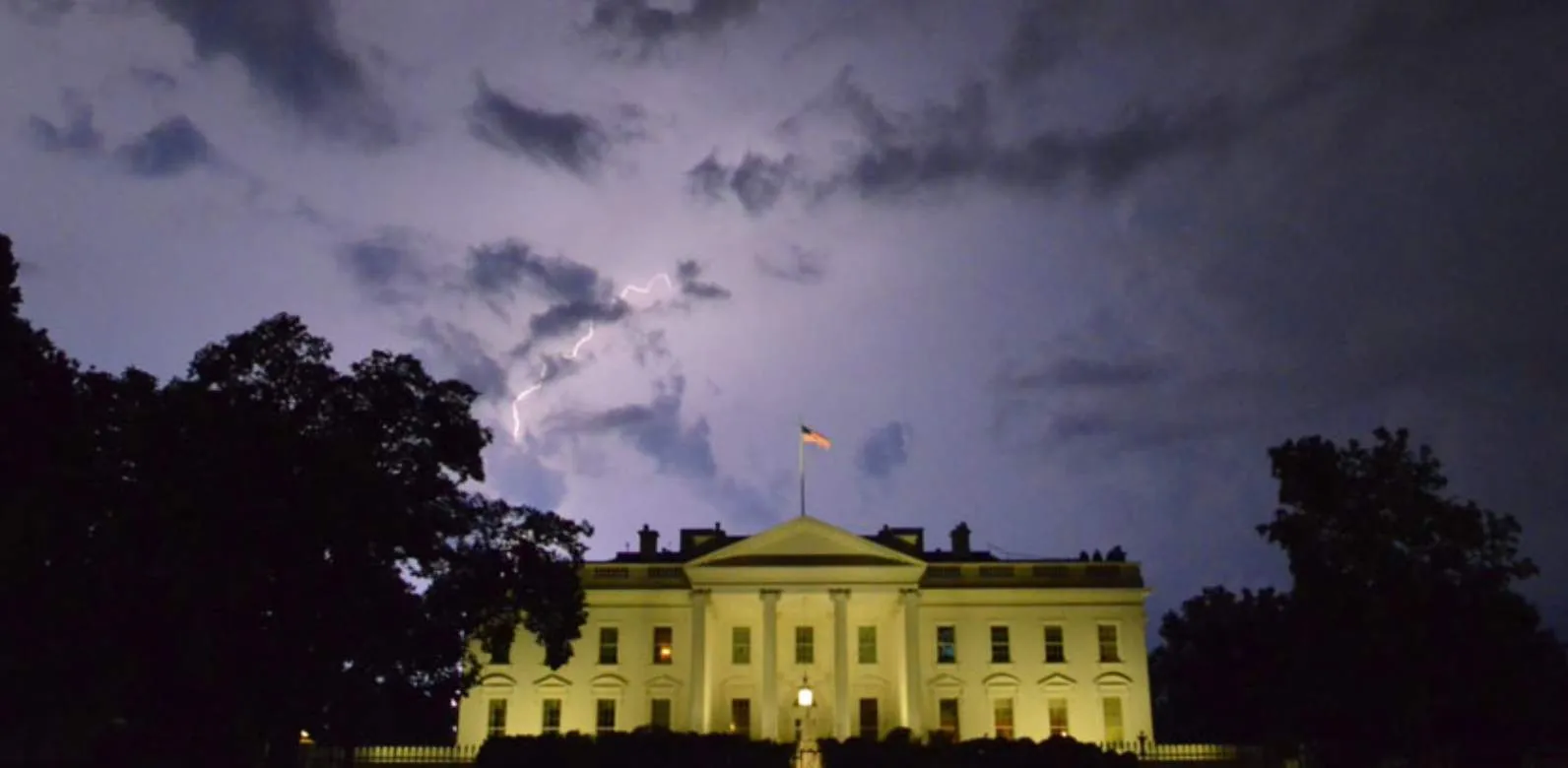CIA Targeter Nada Bakos & the Hunt for Iraq’s Missing WMDs
Nada Bakos’ CIA supervisor said she’d rather see her ‘come back in a body bag’ than take time off for weapons training’ before her Iraq posting.
Listen to Nada Bakos True Spies’ podcast: The Targeter
On September 11, 2001, as the world looked on, America mourned the deaths of 3,000 souls in the attacks on the World Trade Center and Pentagon. The architects of 9/11 were mainly Saudi Arabians - a key US ally in the Middle East - but what on earth did Saudi Arabia and al-Qaeda have to do with Iraq?
Possibly nothing but it was Nada Bakos’ job to find out. She is a former analyst and CIA Targeting Officer who worked on the Iraq war in the counterterrorism center from 2000 until 2010. A Targeting Officer's job is to identify the people, relationships, and organizations who might threaten US interests.
Bakos and her team were in charge of finding a connection between 9/11, Iraqi leader Saddam Hussein, and al-Qaeda in the early 2000s. The pressure was on to find Saddam’s Weapons of Mass Destruction (WMD) to justify a US-led invasion but - if the weapons existed at all - they were illusive. Despite that, some in the US government didn’t want to hear ‘no’ in the aftermath of the attack on the Twin Towers and Pentagon. Plans were being laid for a ground and air invasion in March 2003 and the CIA was in the thick of it.

2001: the US on a war footing
In a UN address in February 2003, former US Secretary of State Colin Powell made the case for war: “Iraq and terrorism go back decades but what I want to bring to your attention today is the potentially much more sinister nexus between Iraq and the al-Qaeda terrorist network, a nexus that combines classic terrorist organizations and modern methods of murder. Iraq today harbors a deadly terrorist network headed by Abu Musab al-Zarqawi.”
Abu Musab… who?
Post 9/11, Osama bin Laden’s name was widely recognized. But as the US and Allied invasion of Iraq loomed, a little-known Jordanian extremist Abu Musab al-Zarqawi was about to hit the front pages. “The first time most people had ever heard of him was Colin Powell's UN speech because he's a nobody and now, all of a sudden, he's on the global stage,” Bakos told the True Spies podcast.
Essentially, al-Zarqawi had been a street thug in Jordan. After being radicalized in prison, he’d taken up the extremist cause. He landed on the CIA’s radar in the mid-90s when he was in Herat, Afghanistan while also conducting operations inside of Jordan. Around 2000, al-Zarqawi crossed into northern Iraq to lead Ansar al-Islam, a fledgling Iraqi terrorist organization with loose ties to al-Qaeda.
“He was the B- or C-team, where al-Qaeda was the A-team,” Bakos . “So he saw that as an opportunity. It's going to be the first time he's going to be on the world stage.”

"The brand new social experience where you activate your gaming skills as you train like a spy."
- TimeOut
Take on thrilling, high-energy espionage challenges across different game zones.

The CIA & WMD: the heat is on
The presence of al-Zarqawi in Iraq just might give the US government an advantage, however - the justification Washington needed to settle an old score.
Some believed former US President George W. Bush wanted to complete the circle for his father, Bush Sr., who had to deal with pushing Saddam out of Kuwait during the first Gulf War. Whether that’s true or simply speculation isn’t clear. What is clear, is that the much-ballyhooed Iraqi WMDs - the initial justification for the 2003 invasion - have never been found.
Perhaps al-Zarqawi offered fresh justification for war, however. If Saddam was harboring anti-American jihadists like al-Zarqawi, that just might swing the American and British public into supporting a war in Iraq. People like Nada Bakos were expected to deliver the so-called ‘smoking gun’ -if only she could find either the WMDs or al-Zarqawi.

9/11 and the new US White House intelligence team
Nada was an unlikely link between the US and Saddam Hussein. She grew up in a farming community in rural Montana and joined the CIA in 2000, a year before 9/11. Her gift is an innate ability to sift through tons of information and be able to pull out the salient pieces - an ideal skill for a CIA analyst who is expected to provide unimpeachable reports to policymakers. Lives are often on the line, so precision is paramount.
“It's very concise, so you have to have a very specific style to write for the president,” Nada said. “Most of it is really just so that you convey as much important information as you can in a very few words.”
Shortly after 9/11, she switched to the counterterrorism center’s Office of Transnational Issues. The hours were long and unsociable in the service of one goal - finding a definitive link between Iraq and al-Qaeda. But when the ‘right’ data failed to emerge, the Pentagon took matters into its own hands.
“There was considerable pressure. So much so that the Department of Defense under Doug Feith created their own intelligence team to evaluate any connection they thought they would find between Iraq and al-Qaeda,” Nada said.

The White House Office of Special Plans
Some, like Nada, felt Doug Feith’s newly founded Office of Special Plans circumvented CIA intelligence protocols, delivering raw information without context and without explaining the reliability of their sources - the exact opposite of what Nada and her fellow analysts had been trained to do.
“They came up with some really spurious connections that were false, that didn't make any sense, that you could poke holes in them a million miles away. But they kept trying to push that bottom line and use some of that information to justify moving forward, which... I guess in a way they were successful with that,” she said.
By the Spring of 2003, the White House had all the justification it needed for war. The first bombs hit Baghdad on May 19, 2003. Saddam’s government was dismantled. Nada was now en route to Iraq. The CIA needed people on the ground to identify the Iraqi government’s links to terrorist groups, and specifically that of Abu Musab al-Zarqawi. Members of the shattered Iraqi intelligence service would need to be pumped for information in person.
Nada wasn’t trained to operate in a war zone though - neither were her colleagues - so the CIA set up weapons training. Nada’s boss's boss wasn’t interested, however, telling her supervisor: “Well, I can't spare her for those extra days to go do that training. So I'd rather have her come back in a body bag than go do weapons training.”

Nada Bakos’ big break with Iraq’s deputy PM
Weapons training or not, Nada was excited to be flying to Iraq. She was a rookie on her first big tour of a war zone and she was looking forward to the adrenaline rush. She boarded the Lockheed C-130 transport plane alongside all of the cargo and set off to war. America’s enemies in Baghdad, including terrorist insurgents and what remained of Saddam’s military, were taking advantage of the chaos, however. They would not be going down without a fight.
Nada and her team planned to fight hard too, however. Their mission was to justify the war and find Abu Musab al-Zarqawi: “At that point, we're still having to look backward for the administration to see if there's any evidence to support why they invaded.”
Nada was about to meet Tariq Aziz, Minister of Foreign Affairs, Deputy Prime Minister, and at the time one of the most well-known politicians in Iraq. For a CIA Targeting Officer, former foreign minister Tariq Aziz was a dream detainee but he was still a prisoner. And a smart prisoner who wanted to know the limits of his relationships. Could he take advantage? What could he get away with?
Find out more about how Nada handled Tariq Aziz and her CIA mission in Iraq. Listen to True Spies: The Targeter.
SPYSCAPE+

Join now to get True Spies episodes early and ad-free every week, plus subscriber-only Debriefs and Q&As to bring you closer to your favorite spies and stories from the show. You’ll also get our exclusive series The Razumov Files and The Great James Bond Car Robbery!


Gadgets & Gifts
Explore a world of secrets together. Navigate through interactive exhibits and missions to discover your spy roles.
Your Spy Skills
We all have valuable spy skills - your mission is to discover yours. See if you have what it takes to be a secret agent, with our authentic spy skills evaluation* developed by a former Head of Training at British Intelligence. It's FREE so share & compare with friends now!
* Find more information about the scientific methods behind the evaluation here.


Stay Connected
Follow us for the latest
TIKTOK
INSTAGRAM
X
FACEBOOK
YOUTUBE